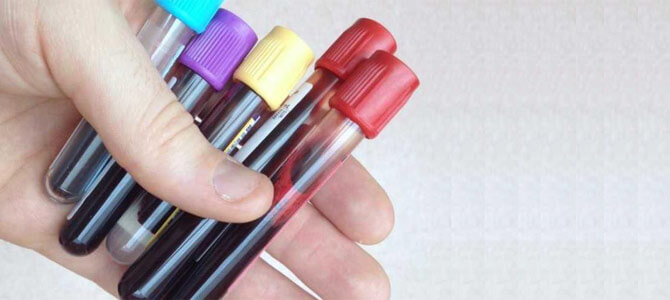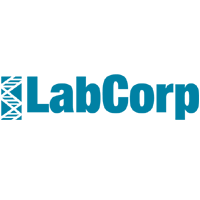
STD Testing Centers
Lonerock, OR
Same Day Service
No Doctor Visit Or Insurance Required
Accredited Drug Testing provides multiple STD tests at our Lonerock, Oregon testing centers for individuals who may have been exposed to or showing symptoms of an STD. Millions of Americans have some form of an STD and our testing is provided in a confidential manner. STD tests at our Lonerock, OR locations may be ordered for one specific type of test or you may order a multiple panel screening which includes several STD tests. Same day service is available, and we have multiple Lonerock, Oregon STD testing centers within minutes of your home or office. All testing information and results are confidential.
422 N MAIN ST 0.1 miles
CONDON, OR 97823
J ST 17.3 miles
FOSSIL, OR 97830
564 E PIONEER DR 24.6 miles
HEPPNER, OR 97836
120 On The Mall 38.0 miles
Arlington, OR 97812
110 Main St 49.4 miles
Moro, OR 97039
Testing services include physician referral, collection of the specimen, complete laboratory analysis and confidential and secure result reporting.
** Patients who have high insurance deductibles, co-pays or do not have insurance can access important health and wellness testing by scheduling/Ordering a confidential clinical test through Accredited Drug Testing By Phone or On-line.
The process to schedule a lab/blood test in Lonerock, Oregon is fast and easy!
Step 1: Schedule/Order your test online at www.accrediteddrugtesting.com/lab-test-order or call our scheduling department at 800-221-4291. You do not need to visit a doctor to order a test.
Step 2: Provide confidential and secure patient information including the type of test, zip code of the location area you would like to take the test and payment information (self-pay).
When completed you will receive a patient registration form by email where you can immediately proceed to the testing location in the Lonerock, Oregon area. Same day service is available and your registration pass will have the testing location address and hours of operation.
Step 3: After your test has been analyzed by one of our nationally CLIA and FDA certified laboratories (Quest/ LabCorp) your results will be sent through a confidential, secure and encrypted portal to the email address that you provided. In the event that the test is non-negative, abnormal or other circumstances, a consultation with the referring physician is available.
STD Definitions/Descriptions
STD stands for Sexually Transmitted Disease, also known as STI or Sexually Transmitted Infection, meaning that these diseases are most often, but not exclusively, spread by sexual intercourse.
STDs are passed from one person to another through sexual activity which can include vaginal intercourse, anal intercourse and/or anal intercourse. Though not as common, STDs can also be transmitted through intimate physical contact such as heavy petting.
STDs do not always cause symptoms, or they may only cause mild symptoms. This makes it very possible to have an infection and not know it. Therefore, if you are sexually active it is important to get tested at least once a year. You will find the most common types of STD and STI testing below.
HIV - HIV is a sexually transmitted disease (that can be spread outside of sexual contact) known as Human Immunodeficiency Virus (HIV). It is the virus that causes AIDS and interferes with the body's ability to fight infections.
Herpes 1 and 2 - Herpes is an infection caused by HSV (herpes simplex virus). This virus affects the external genital, anal region, mucosal surfaces and skin in other parts of the body. There are two types of herpes simplex viruses: HSV-1 9 herpes type 1, or oral herpes) and HSV-2 (herpes type 2, or genital herpes).
Gonorrhea - Gonorrhea is a common sexually transmitted disease that can cause infections in the genitals, rectum and throat for both men and women. If untreated it can cause serious health issues, however, if it is caught in time it can be cured with the right medicine.
Chlamydia - Chlamydia is a common sexually transmitted disease that may not show symptoms. However, those that do show symptoms may experience genital pain and discharge from the vagina or penis. If left untreated it can cause damaging effects to the woman's reproductive system.
Syphilis - Syphilis is a sexually transmitted disease that develops in different stages. The first stage involves a painless sore on the genitals, rectum or mouth. After that initial sore heals, the second stage is a rash. Then, there are no symptoms until years later which is the final stage - damaged brain, nerves, eyes and/or heart.
Many STDs can be easily cured with medication, so you can just finish your treatment and get on with your life. And even though some STDs can't be cured, there are lots of ways to treat your symptoms and prevent you from giving your STD to anyone you have sex with.
People with STDs can be in relationships, have sex, and live totally normal lives. Most people get an STD at least once, and millions are living with STDs now. Having an STD is nothing to feel ashamed of, and it doesn't mean you're "dirty" or a bad person , it just means you're a pretty normal human who got an infection. The reality is that STDs can happen to anybody who's ever been sexual with someone, which is almost everybody on earth. And a few STDs can be spread in non-sexual ways, too.
Accredited Drug Testing can schedule your STD test at an Lonerock, Oregon testing facility in a confidential, friendly and professional manner. Call us today!
Handy Resources
Comprehensive Online Resources for Drug Testing
- National Institute on Drug Abuse (NIDA)
Provides comprehensive information on drug testing and its role in substance use disorder treatment.
- FDA: Drug Testing
Explains the FDA's role and regulations concerning drug testing for consumers.
- PDR.net
Provides detailed drug information and safety updates through a mobile-friendly platform.
- BeSafeRx - FDA
Resource by the FDA to help consumers identify and choose safe online pharmacies.
- SAMHSA: Drug Testing Resources for the Workplace
Resources and guidelines for drug testing in the workplace.
- Drugs.com
Provides drug information, side effects, and interactions for consumers and professionals.
- Drug Abuse Screening Test (DAST)
Online version of the DAST to help individuals assess whether they have a drug problem.
- Merck Manuals
Consumer-friendly medical resource providing comprehensive information on a wide array of health topics, including drug testing.
- SAMHSA Store
Provides access to resources and publications on substance use prevention and treatment.
- National Association of Boards of Pharmacy (NABP)
Information on state boards of pharmacy and regulations, including those related to drug testing.
- CDC: Workplace Health Promotion
CDC's resources on substance use and drug testing in the workplace.
- Mayo Clinic: Drug Testing
General information about the procedures and types of drug tests.
- MedlinePlus: Drug Testing
Offers information about various drug tests and their uses in medical diagnosis and treatment.
- University of Rochester Medical Center Health Encyclopedia
Provides a detailed entry on drug testing, including how tests are conducted and what they detect.
- World Health Organization (WHO)
International guidelines and information on public health, including substance abuse and drug testing.
- Healthline: Drug Testing
Consumer health site offering information on how drug tests work and what they look for.
- WebMD: Drug Testing
Provides a patient-oriented overview of drug testing and its purposes.
- National Center for Biotechnology Information (NCBI)
Provides a vast database of scientific studies, including research on drug testing and its effectiveness.
AI Overview
Overview of STD Testing
Sexually Transmitted Disease (STD) testing is a critical component of healthcare, essential for detecting and managing infections transmitted through sexual contact. STD testing is recommended for anyone who is sexually active, as early detection and treatment can prevent serious health consequences and limit the spread of infections to others.
Importance of STD Testing
Regular STD testing is vital because many infections often do not show symptoms immediately, or symptoms may be mild and go unnoticed. Untreated STDs can lead to severe health issues, including infertility, complications during pregnancy, and increased risk of acquiring other STDs, including HIV.
Common Types of STD Tests
- HIV Testing: Performed through blood or saliva samples to detect the presence of HIV antibodies or antigens.
- Chlamydia and Gonorrhea: These bacterial infections are typically tested via urine tests or swabs of the genital area.
- Syphilis: Diagnosed through blood testing, which can detect antibodies produced in response to the infection.
- Herpes: Although no cure exists, testing for herpes involves blood tests or swabs from an active outbreak.
- Hepatitis B and C: Blood tests are used to diagnose these viral infections, which affect the liver.
When to Get Tested
- After Unprotected Sex: It's advisable to get tested if you've had unprotected sexual contact with a new partner or multiple partners.
- If Symptoms Occur: Symptoms such as sores on the genitals, pain during urination, or unusual discharge are indications for testing.
- Regular Screenings: Annual or more frequent STD testing may be recommended for active individuals, especially if they have multiple partners.
What to Expect During STD Testing
The testing process is straightforward, involving a physical examination, the collection of samples (blood, urine, swabs), and sometimes a visual inspection of affected areas. Confidentiality is a cornerstone of STD testing, ensuring privacy and discretion in handling patient information and test results.
Benefits of STD Testing
- Early Detection and Treatment: Allows for timely treatment that can effectively manage symptoms and prevent transmission to others.
- Peace of Mind: Provides reassurance and helps maintain your health and the health of your partners.
- Prevention of Complications: Reduces the risk of the long-term health issues associated with untreated STDs.
Understanding the importance of STD testing and participating in regular screenings can significantly impact personal health and public health outcomes. It is an essential step in responsible sexual health management.
"When You Need A Test, Choose The Best"
AccreditedDrugTesting.Com
800-221-4291


Lonerock is a city in Gilliam County, Oregon, United States. The population was 21 at the 2010 census.
Lonerock was founded in 1881 as a service center for the surrounding ranches. It was named for an unusual, 35-foot (11 m)-high lone rock which still stands in the town near the old Methodist church. The city's population grew from 68 in 1900 to 70 in 1910, 73 in 1920 and then to a high of 82 in 1930. By the 1940 census, Lonerock's population dwindled to 46, and continued to drop to 38 in 1950, 31 in 1960, and then bottomed out to 12 residents in 1970. The city grew to 26 citizens in 1980, before falling to 11 in the 1990 census. Lonerock is a small town in Gilliam County, Oregon, about 19 miles from Condon. Lonerock got its name from the giant rock that can be found on the outer edge of the small town. The first settlers came to Lonerock in 1871, looking for a place to homestead (Thouvenel, Palmer, 2: 10). After a few years, a handful of homesteaders had begun to plant roots in the small valley community. Lonerock had become a popular landing spot for these journeymen because of the small stream and abundance of bunch grass growing in the area. This area was also popular with the big game and provided the homesteaders an opportunity to hunt for their families’ food. Many of these first settlers planted crops and raised various types of livestock to survive. However, in 1874, a homesteader by the name of Edward Wineland built a sawmill, powered by a water wheel in the stream. This gave Lonerock a great opportunity to grow and prosper as a community (2: 12) -- which is exactly what the community did, signified by the post office that was built in November of the very next year (2: 13). However, in the year 1878, Lonerock began to have struggles with the Indians in the area, causing many of settlers to flee to The Dalles, while the remaining members of the community gathered together in the most fortified settlement, for protection (2: 10). With the help of some of the friendly tribe members and the U.S. Army, the hostile Indians were pushed back into Idaho territory (2: 10). Even this conflict could not prevent the determined Lonerock community from officially establishing itself as a town. By the year 1882, their hard work and patience had paid off as they became one of the first towns of Gilliam County, Oregon (Thouvenel, Palmer, 1: 6). With this new-found township still inspiring the community, they elected the first and current postmaster and banker, R.G. Robinson to the position of Mayor (1: 6). By the year 1888, the Lonerock community had grown to the point that building a school had become a logical improvement that they wanted to make (1: 6). The school was merely a humble two-story building, but community proudly educated all twelve grades (1: 6). The school's final graduation was in 1932, and by the end of the next thirty years the school had closed down completely (1:6). Ten years later, Reverend Deuse joined the community and built a Methodist church that held weekly services for many years. This church still stands and occasionally holds services to this day (1: 6). The small white church has become as iconic to the Lonerock community, as the rock itself. In July 1896, the town was almost wiped out by fire. The entire business portion burned and left only a few dwellings on the outskirts of town. It was reported that a small boy with a pocket full of matches started the blaze With the turn of the century, Lonerock’s population had grown greatly, with new citizens arriving and with multiple businesses operating within the city limits (1: 6). Many of the surrounding homesteads had become successful ranches and farms that occupied thousands of acres on the surrounding hillsides. Over the years, the members of the Lonerock community began to develop a culture that enjoyed various community activities. Some of these activities included hunting, (which had taken on the form of a sport in contrast to being a main source of food,) fishing, and sledding in the winter seasons. The citizens of Lonerock even organized their own rodeo, which they hosted every year right down the middle of Main Street. This became a popular event, attracting participants and spectators from the surrounding area. By the 1920s, rodeos in the surrounding areas grew larger and Lonerock’s annual rodeo was no longer the popular event that is once was, so in 1934, the final Main Street rodeo was held (Hardie, 2014). Sadly, the success and growth of Lonerock was not everlasting; as the sawmill and many jobs moved to the larger nearby towns we see the citizens follow.
From 1930 to 1940, the population was nearly cut in half. This decrease was very hard on the town and reduced its economy dramatically. Within a short time- the only in town employers were agricultural farms and ranches, while the rest of the citizens were comfortably retired. This economic and cultural balance has continued to the present day.
The vast amounts of bunch grass in the hills around Lonerock have become a major asset in raising the cattle that have replaced the sheep production. This cattle production accounts for nearly all of the citizens’ income and a majority of the land is utilized as range land. Without the income and production of cattle, sheep, and the bunchgrass on which they grazed, Lonerock as a town, would most likely not have survived. The other half of the agricultural economy in Lonerock is hay production. Originally, Lonerock’s climate was not capable of producing a yield worthy of planting up keeping each year. However, with the introduction of multiple irrigation methods in the Lonerock valley, the yield of the alfalfa increased greatly, providing ranchers in the area with hay to feed their cattle through the winter, without needing to rely on outside producers.


